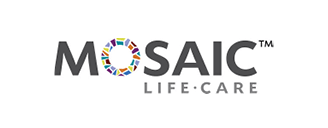Improving Healthcare Supply Chain Sustainability
Organizations struggling with back orders, high costs, and the ongoing demand to provide optimal patient care face a fresh set of challenges as sustainability becomes an urgent focus in the healthcare supply chain.
While the pandemic has been cited as the main factor in what has become a stressed supply chain, climate change and the global push for environmental sustainability constitute another factor adding to the challenges.
“Extreme weather, from floods to wildfires, is increasingly hammering ports, highways, and factories worldwide,” according to an article from the Yale School of the Environment.
Although the industry has learned to manage the long-term effects of a global pandemic, the harsh reality is that environmental challenges are not going away—and may only worsen.
Healthcare Supply Chain Sustainability: In Everyone’s Interest
The supply chain accounts for 71% of healthcare’s carbon emissions; the good news is that the entire carbon footprint of the industry can be significantly reduced.
It’s in everyone’s best interest to tackle this challenge head-on given the impact climate change is already having on the supply chain.
Healthcare organizations, as significant purchasers, possess the power to influence the supply chain in favor of sustainability. Key stakeholders’ conversations have already resulted in increased transparency in the supply chain, allowing organizations to purchase products that align with their sustainability goals.
Reconsidering Supply Chain Management
In order to focus on healthcare supply chain sustainability goals on top of other ongoing challenges, there needs to be a fundamental change in how we manage the supply chain.
Increase Visibility
Using visibility software allows organizations to see into the supply chain, allowing them to make more informed decisions. Combined with smart routing software, the number of empty/partial loads and fuel usage can be significantly reduced, thereby reducing errors and unnecessary orders that add to waste.
This efficient approach reduces both the environmental footprint of the healthcare supply chain and costs.
Increase Efficiency
By utilizing software that provides enhanced visibility and cost optimization, healthcare organizations are saving both time and money. Fewer hours spent managing the supply chain translates to more resources allocated to monitoring and improving sustainability practices. During a labor shortage, this is critical.
Implement ESG
Environmental, social, and corporate governance (ESG) principles provide a framework for sustainability initiatives.
Organizations can ensure an environmentally friendly production and packaging process by partnering with suppliers who also follow the ESG framework, in addition to adopting internal ESG principles.
Utilize Low or Zero-Emission Vehicles
By including even a small number of low-emission vehicles into the fleet, organizations can reduce carbon emissions during transportation.
Incorporate Warehouse Energy Efficiency Measures and Sustainable Packaging
LED lighting, automated systems, and optimized temperature control implemented as warehouse energy efficiency measures help save energy.
Companies can adopt sustainable packaging materials, such as recyclable or biodegradable options, to reduce reliance on single-use plastics and optimize packaging sizes, reducing waste and maximizing space utilization during transportation. This reduces reliance on single-use plastics. Additionally, optimizing packaging sizes helps minimize waste and maximizes space utilization during transportation, reducing the need for multiple shipments.
Giving healthcare supply chain sustainability its proper due within an organization requires a full effort. By applying these approaches, the freight industry can meet the needs of healthcare provider customers while providing environmentally friendly, sustainable, and ethical shipping solutions.
To learn how your organization can monitor and manage your supply chain more efficiently, visit www.getvpl.com today and explore solutions that prioritize healthcare supply chain sustainability.


































